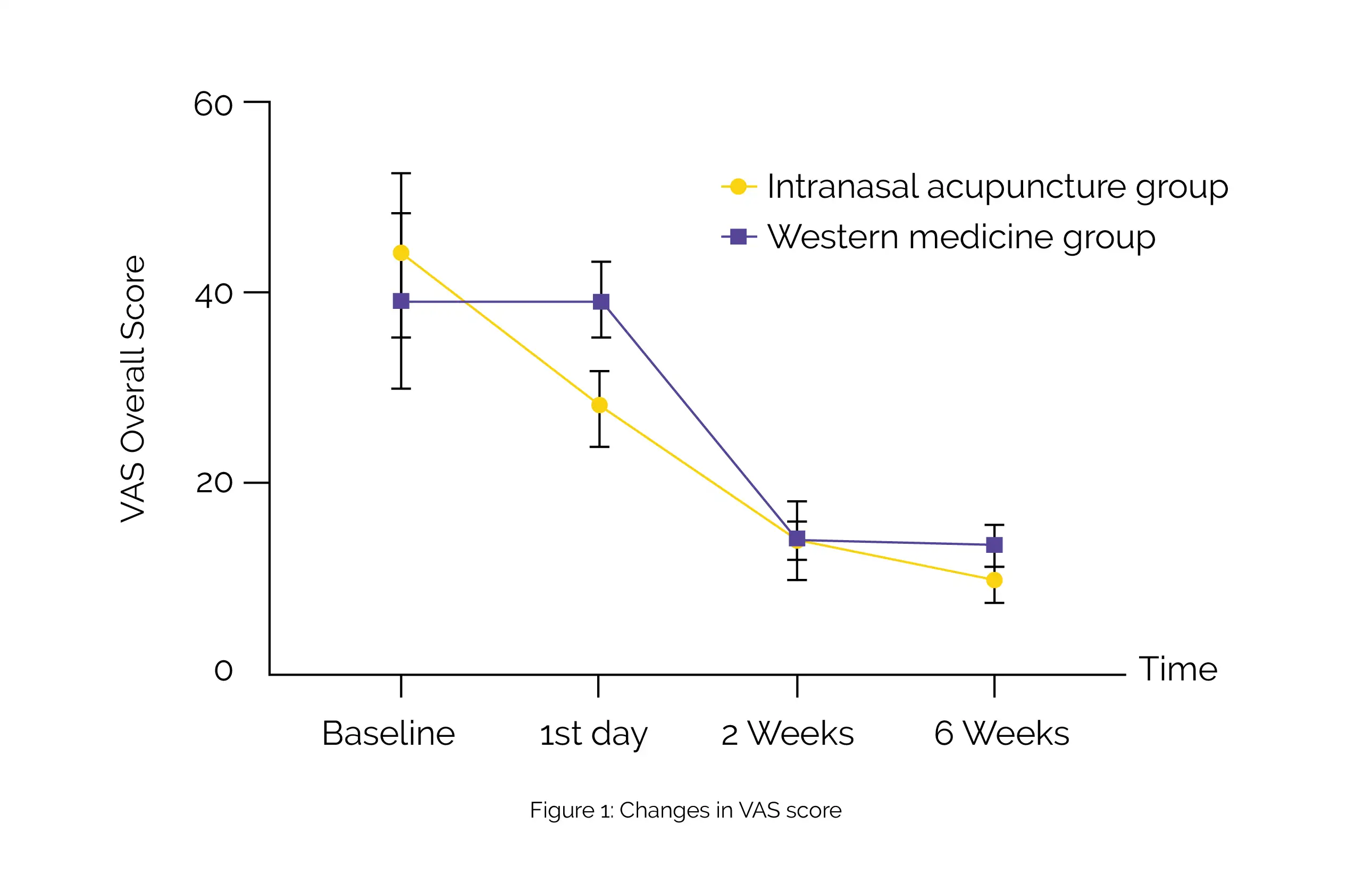Categories
Change Password!
Reset Password!


The safety and effectiveness of a novel intranasal acupuncture method at Neiyingxiang (EX-HN9) and Biqiu points were assessed for the clinical management of moderate to severe persistent allergic rhinitis (PAR).
Intranasal acupuncture is an effective, reliable, and safe treatment for persistent allergic rhinitis, as it may improve quality of life, ameliorate nasal symptoms, and minimize the dosage of medicine.
The safety and effectiveness of a novel intranasal acupuncture method at Neiyingxiang (EX-HN9) and Biqiu points were assessed for the clinical management of moderate to severe persistent allergic rhinitis (PAR).
The SAS random grouping approach was used to randomly assign (2:1 ratio) 120 individuals with a diagnosis of PAR to either the intranasal acupuncture or Western treatment groups. The applicator handled a 0.30 × 75 mm filiform needle and a nasal endoscope in their right and left hands, respectively. Without using any specific procedures for reinforcing and reducing, the applicator promptly inserted the needle to a depth of 20 mm as parallel to the inferior turbinate or middle turbinate as possible when targeting at Neiyingxiang or Biqiu point. The needle remained for about twenty minutes.
Three times a week for two weeks, acupuncture treatments were given to the intranasal acupuncture groups. For two weeks, the Western medicine group received Loratadine (one pill per night) and Budesonide nasal spray (two sprays per nostril, twice daily). Visual analogue scale (VAS) scores were the key endpoint. The Rhinoconjunctivitis Quality-of-Life Questionnaire (RQLQ) was used to examine secondary endpoints such as quality of life, adverse events, and prescription doses. To analyze the information from the treatment and follow-up periods, confidence assessments were carried out.
On day 1 (the first treatment), the intranasal acupuncture group's VAS (Figure 1) and RQLQ scores were considerably lower than those of the Western medicine group (P < 0.05; 95% CI −13.1 to −9.6 VAS points), (P < 0.05; 95% CI −20.27 to −12.28 RQLQ points).

There was a significant improvement in sleep (95% CI − 5.05 to − 3.57 points), overall symptoms (95% CI − 2.86 to − 1.86 points), emotional problems (95% CI − 5.05 to − 3.5 points), nasal obstruction (95% CI − 6.33 to − 5.36 points), olfactory function (95% CI − 2.91 to − 1.75 points), actual problems (95% CI − 2.03 to − 0.06 points), and nasal symptoms (95% CI − 6.62 to − 4.5 points). At week 2, both groups' VAS and RQLQ scores considerably improved.
The VAS (P > 0.05; 95% CI -1.21 to -1.38 points) and RQLQ (P > 0.05; 95% CI -0.33 to -3.46 points) scores, however, did not show any discernible inter-group differences. Symptoms related to olfactory function were considerably reduced (95% CI: -1.58 to -0.21 points). When compared to the Western medicine group, the intranasal acupuncture group exhibited higher RQLQ and VAS scores during the follow-up period. Profound differences were noted between the two study groups.
VAS scores on rhinobyon symptoms, olfactory function, rhinorrhea, and nasal itch were improved. Furthermore, there were improvements in RQLQ scores for activities, eye and nasal symptoms, non-nasal/eye symptoms, and actual problems. Neither group experienced any negative side effects while receiving treatment.
Intranasal acupuncture is safe and effective to treat PAR. Additionally, the intranasal acupuncture group had significantly lower VAS and RQLQ ratings than the Western medicine group. Acupuncture exhibited an immediate effect, particularly for reducing nose congestion, enhancing olfactory function, and promoting sleep.
European Archives of Oto-Rhino-Laryngology
A novel and alternative therapy for persistent allergic rhinitis via intranasal acupuncture: a randomized controlled trial
Li-li Liu et al.
Comments (0)